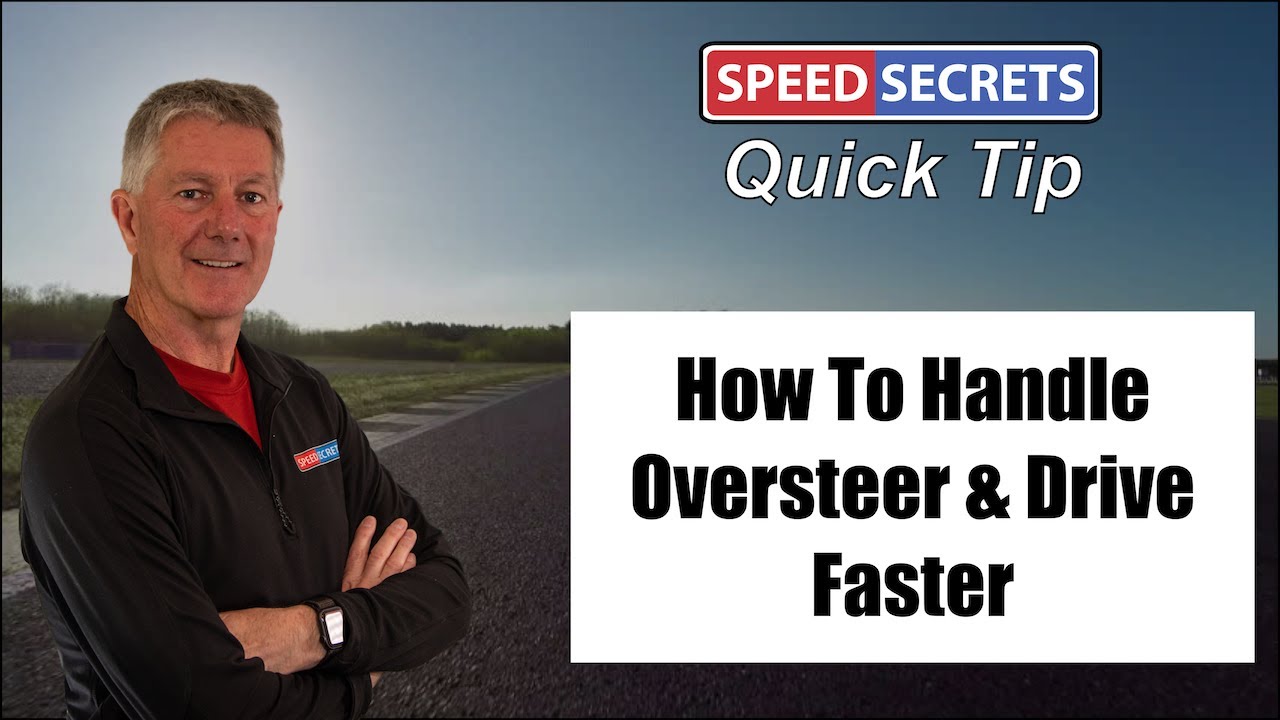Q: “What causes the phenomenon known as “fishtailing” and how do you stop it? I was at a HPDE event at Road America many years ago and the instructor said a quick stab of the brakes would stop it. I’ve have only gotten to use it when towing an unstable race car trailer, and it did work on that. Should that work in a race car or on the highway?”
A: “Fishtailing” is oversteer. Think of oversteer as the car steering more than you wanted it to, so it has over-steered. In other words, you’re going around a corner, turning the steering wheel the appropriate amount to make the turn, but the rear of the car swings out and makes the car turn more than you wanted. It has oversteered. Another way to think of oversteer – or fishtailing – is that the rear tires have less grip than the front tires do, and therefore they slide more than the front tires.
Note that oversteer is not what you, the driver, have done – you haven’t turned too much. Oversteer is what the car is doing. See the Oversteer: What It Is & How to Control It video.
Why has the car oversteered or fishtailed? Again, it’s because the rear tires have less traction than the front tires do. What could cause that? Ultimately, speed is a factor – if you were going slower, the tires (in this case, the rear tires) would not have reached their limit of traction and begun to slide. Usually there is more than one factor at play here. Often the car is not balanced – the main thing that you, as a driver, can control at the moment in time. When you brake, what happens? The car’s nose dives because weight has transferred to the front; the rear tires have become less loaded, and therefore their traction/grip level has been reduced. I hope all of that makes sense because it leads to the answer to your question – but it’s important that you understand that first.
If your car is fishtailing, or oversteering, it’s because the rear tires have less traction than the fronts. A quick stab of the brakes will put more load on the fronts, and less on the rear, making the problem worse.
There is one other scenario that could lead to something that seems like fishtailing, and that’s “power oversteer.” If you drive a rear-wheel-drive car with enough engine power to cause the rear tires to begin to spin (wheelspin) while coming out of a corner, you will cause the rear tires to break traction and the rear of the car will begin to slide sideways. This is oversteer, but in this case it’s caused by extreme power being delivered to the rear tires – you were too hard on the gas pedal. To control this, you should simply ease up on the gas pedal. I would definitely not recommend stabbing the brakes, as that’s going to cause too much load transfer to the front, and could cause the car to spin around. And again, to control power oversteer, simply ease up a little on the gas pedal to reduce the power to the rear tires.
As you can see, neither situation would be cured by a quick stab of the brakes. In most cases (there could be an exception to this, but it’s extremely rare – I can’t think of one right now!), the last thing in the world you would want to do is stab the brakes. Modulating the throttle is the only thing you should do. If you’re dealing with oversteer from the rear tires not having enough load on them, gently squeeze on the gas to transfer weight to the rear; if you’re dealing with power oversteer, gently ease up on the gas pedal to give the rear tires more cornering grip. Notice the word “gently” in both scenarios.
I’ve driven many tow vehicles with trailers that were unstable (unfortunately!), and never once has braking helped stabilize it. Sure, slowing down can help, but that must be done very gently, otherwise the trailer will try passing the tow vehicle! In fact, I remember sleeping in a van on the side of a highway one night after my co-driver overreacted to a swinging trailer and braked. The trailer swung around, spinning both trailer and tow vehicle – and blowing out the tires on one side of the trailer. In most cases, if a trailer begins to swing, gently easing on the gas pedal will pull it out of that situation. The problem with this is that it was too much speed for the stability of the trailer that caused the problem in the first place – and it’s not instinctual to accelerate when the vehicle is feeling slightly out of control.
All of this comes down to basic physics and vehicle dynamics. Of course, it’s one thing to understand it at an intellectual level, and another to actually do the right thing when faced with what feels like an upcoming near-death experience!

